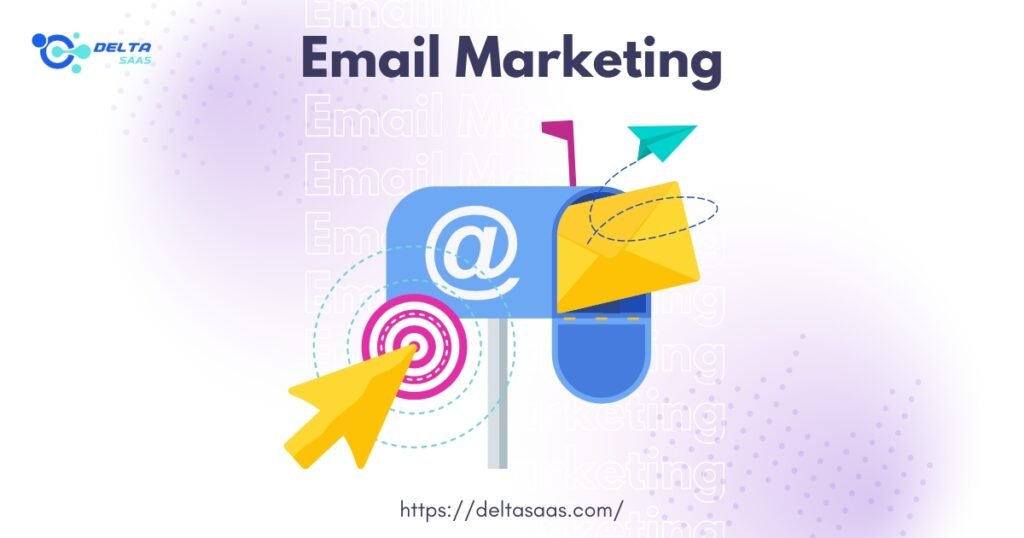Email Marketing ROI: Calculating and Improving Your Returns
Understanding Email Marketing ROI
Email marketing remains one of small businesses and enterprises’ most effective digital strategies. Its return on investment (ROI) is often reported as among the highest among marketing channels. Reports suggest that for every $1 spent, businesses can generate an average ROI of 4,200%, making it a key component of any digital marketing strategy.
What is Email Marketing ROI?
Email marketing ROI measures the revenue generated from email campaigns compared to the costs involved. A well-executed email marketing strategy helps businesses generate leads, nurture customer relationships, and drive sales.
The formula for calculating email marketing ROI is:
This formula clearly explains how well email marketing efforts are performing in terms of profitability.
Why Email Marketing ROI Matters
A high email marketing ROI proves that sending emails remains a profitable marketing channel. Here’s why businesses should focus on optimizing their email marketing ROI strategy:
- Cost-Effective Marketing Channel: Unlike social media advertising or paid search, email marketing requires less marketing spending and offers higher conversion rates.
- Personalization Increases Engagement – Tailored emails based on user behavior and preferences improve open and click-through rates.
- Automated Email Sequences Boost Sales – Marketing automation tools streamline communication, ensuring timely and targeted messages reach customers.
- Data-Driven Decision Making: Marketing analytics tools help track key performance metrics, such as bounce, open, and conversion rates.
Measuring Email Marketing ROI
Tracking Key Metrics
Businesses must monitor specific email marketing metrics to measure and improve performance:
- Open Rate – Percentage of recipients who open an email.
- Click-Through Rate (CTR) – Percentage of recipients who click a link within an email.
- Conversion Rate – Percentage of users who take a desired action, such as purchasing.
- Bounce Rate – Percentage of emails that were not successfully delivered.
- Unsubscribe Rate – Percentage of users opting out of the mailing list.
Email marketing ROI calculators and marketing analytics software help businesses analyze these metrics effectively.
Using Predictive Analytics
Emerging technologies like artificial intelligence (AI) and predictive analytics help businesses optimize email marketing efforts. AI-powered email automation tools analyze customer behavior to suggest:
- Best sending times to maximize open rates.
- Personalized content that resonates with the target audience.
- Improved segmentation strategies to boost engagement.
Evaluating Marketing Spend vs. Revenue
Successful businesses regularly assess their email marketing budget to determine ROI. A data-driven approach ensures that marketing spend aligns with revenue goals. Litmus, a leading email marketing tool, provides smart insights to improve campaign performance.
Read More: How to Be Successful in Digital Marketing?
Factors That Influence Email Marketing ROI
Target Audience Segmentation
Understanding the target audience is essential for optimizing email marketing ROI. Segmenting customers based on demographics, behavior, and past interactions allows businesses to send personalized emails, resulting in higher engagement.
Email Personalization
Emails with personalized subject lines, product recommendations, and tailored content have higher open rates. Studies also show that personalized emails generate six times higher transaction rates than generic emails.
Mobile Optimization
More than 50% of emails are opened on mobile devices. Businesses must ensure their email templates are responsive and easily read on smartphones and tablets.
A/B Testing for Continuous Improvement
A/B testing involves sending two variations of an email to different segments to determine which performs better. Testing elements like:
- Subject lines
- Call-to-action (CTA) placement
- Email design and layout
- Send time and frequency
It helps businesses refine their strategies and improve marketing ROI.
Strategies to Improve Email Marketing ROI
Optimizing email marketing ROI requires businesses to adopt proven marketing tactics that increase engagement, conversions, and revenue. A data-driven approach, combined with email marketing automation, enhances overall effectiveness.
Implementing Marketing Automation
Marketing automation streamlines email marketing, allowing businesses to send personalized, timely, and relevant emails without manual effort. Automated workflows help:
- Welcome new subscribers with engaging onboarding sequences.
- Recover abandoned carts by reminding users of incomplete purchases.
- Re-engage inactive customers with targeted email campaigns.
- Send behavior-triggered emails based on user interactions.
Using mail marketing tools like HubSpot, MailChimp, or ActiveCampaign improves engagement and increases ROI by delivering the right message at the right time.
Crafting High-Converting Promotional Emails
Promotional emails should drive action. An effective email marketing strategy includes well-designed promotional emails with:
- Compelling Subject Lines – Subject lines with personalization or urgency increase open rates.
- Concise and Persuasive Copy – Keep messages clear, focusing on benefits.
- Strong Calls to Action (CTAs) – CTAs should stand out and direct users to take action.
- Visual Appeal – Infographics, images, and branding improve readability.
Optimizing Email List Growth and Hygiene
Maintaining a high-quality email list is essential for maximizing ROI. List hygiene improves deliverability and engagement by:
- Removing inactive subscribers to maintain a healthy open rate.
- Using double opt-in methods to ensure quality leads.
- Regularly verifying email addresses to reduce bounce rates.
Personalization and Segmentation for Higher Conversions
Personalized emails improve customer relationships and increase engagement. Businesses can segment subscribers based on the following:
- Demographics (age, location, gender).
- Behavior (purchase history, browsing activity).
- Engagement levels (active vs. inactive users).
Segmentation ensures that the right content reaches the right audience, boosting conversion rates and marketing ROI.
Using Data-Driven Insights for Better Performance
Analyzing marketing statistics helps businesses refine their strategies. Key email marketing metrics, such as open rate, click-through rate, and bounce rate, provide smart insights into campaign performance.
Businesses can use tools like Google Analytics, Litmus, and HubSpot to track and analyze email marketing performance, ensuring a data-driven marketing approach.
A/B Testing for Continuous Improvement
A/B testing remains a crucial marketing tactic for improving email marketing ROI. Businesses should test different email components to find the best-performing variations, such as:
- Email subject lines – Testing different formats to maximize open rates.
- Call-to-action placement – Experimenting with buttons vs. text links.
- Personalization vs. generic content – Assessing the impact on engagement.
Read More: Email A/B Testing Mistakes to Avoid
Leveraging AI and Emerging Technologies
Artificial intelligence (AI) is transforming email marketing strategies with predictive analytics. AI-powered tools help:
- Predict the best times to send emails for maximum engagement.
- Personalize email content based on past interactions.
- Optimize subject lines and messaging for higher open rates.
Emerging technologies enhance email marketing efficiency, helping businesses stay ahead of marketing trends.
Aligning Email Marketing with Other Digital Strategies
Email marketing performs best when combined with other digital marketing channels, such as:
- Social Media Marketing – Promoting email signups through Facebook, Instagram, and LinkedIn.
- Content Marketing – Using email to distribute valuable blog posts, case studies, and guides.
- Paid Advertising – Running targeted ads to grow email lists.
A multi-channel approach ensures higher engagement and better customer retention, maximizing ROI.
Maximizing Email Marketing ROI for Long-term Success
A well-structured email marketing strategy ensures consistent revenue growth and stronger customer relationships. Businesses must focus on continuous optimization, leveraging marketing automation, predictive analytics, and emerging technologies to achieve higher ROI.
Reducing Bounce Rates and Improving Deliverability
A high bounce rate negatively impacts email performance and the sender’s reputation. To improve email deliverability:
- Use a verified email list – Remove invalid or inactive addresses.
- Authenticate emails – Implement SPF, DKIM, and DMARC protocols.
- Avoid spam triggers – Refrain from using all caps, excessive links, or misleading subject lines.
- Encourage engagement – Ask subscribers to whitelist your emails.
By improving email list quality, businesses enhance email marketing ROI and maintain a strong sender reputation.
Enhancing Customer Retention with Email Campaigns
Email marketing isn’t just for B2B lead generation; it also strengthens customer loyalty. Sending personalized, value-driven emails improves customer retention. Examples include:
- Loyalty Program Emails – Reward repeat customers with exclusive offers.
- Reactivation Emails – Win back inactive subscribers with targeted campaigns.
- Milestone Emails – Celebrate birthdays, anniversaries, and special events.
Engaged customers drive higher lifetime value (LTV), boosting overall marketing ROI.
Measuring ROI with Advanced Analytics
Tracking email marketing ROI requires analyzing performance across multiple marketing platforms. Businesses should monitor the following:
- Email revenue per subscriber – Measures how much revenue each contact generates.
- ROI per campaign – Evaluate performance based on marketing spend.
- Customer acquisition cost (CAC) – Determines efficiency in acquiring leads through email.
Businesses can refine strategies and increase profitability using an email marketing ROI calculator.
Understanding the Advantages and Disadvantages of Email Marketing
Advantages:
✔ High ROI compared to other marketing channels.
✔ Cost-effective and scalable for small businesses and enterprises.
✔ Personalized communication improves conversion rates.
✔ Marketing automation streamlines processes.
✔ Data-driven insights improve targeting.
Disadvantages:
✖ Overuse can lead to email fatigue and unsubscribes.
✖ Spam filters may block promotional emails.
✖ Requires constant optimization to maintain engagement.
Future Trends in Email Marketing
To stay ahead, businesses should adopt emerging email marketing trends:
- AI-powered automation – Improves segmentation and personalization.
- Interactive emails – Boosts engagement with polls, surveys, and gamification.
- Hyper-personalization – Uses advanced data insights for customized messaging.
- Privacy-first marketing – Complies with GDPR and CCPA regulations.
Investing in smart insights and predictive analytics ensures long-term success in email marketing ROI.
Learn More,
Marketing Management: A Strategic Approach to Business Growth
Mastering Marketing and Sales: Key Strategies for Business Growth
Legal Insights: Understanding the Foundations of Law
Mastering Lead Generation: The Key to Business Growth
Key Components of Email Marketing for Business Growth
FAQs
What is the ROI of email marketing?
Email marketing offers an average ROI of 4200%, meaning businesses can earn $42 for every $1 spent.
How do you calculate ROI in email marketing?
Use the formula:
What factors improve email marketing ROI?
Personalization, segmentation, marketing automation, A/B testing, and data-driven marketing strategies enhance ROI.
How effective is email marketing compared to other channels?
Email marketing consistently delivers higher conversion rates and ROI than social media, PPC, and direct mail.
What is the best way to increase email open rates?
Using personalized subject lines, sending emails at optimal times, and avoiding spam triggers improve open rates.
What leads to better email marketing ROI?
A well-optimized marketing plan, customer segmentation, and predictive analytics enhance email performance.
How do businesses reduce bounce rates?
Regularly clean email lists, verify contacts and use proper authentication protocols like SPF and DKIM.
Which industries benefit most from email marketing?
E-commerce, B2B services, SaaS, marketing agencies, and finance see the highest returns from email marketing.
What is the role of AI in email marketing?
Artificial intelligence improves automation, segmentation, predictive analytics, and email personalization.
How does email marketing compare to social media marketing?
While social media increases brand awareness, email marketing drives higher engagement, conversions, and revenue.


